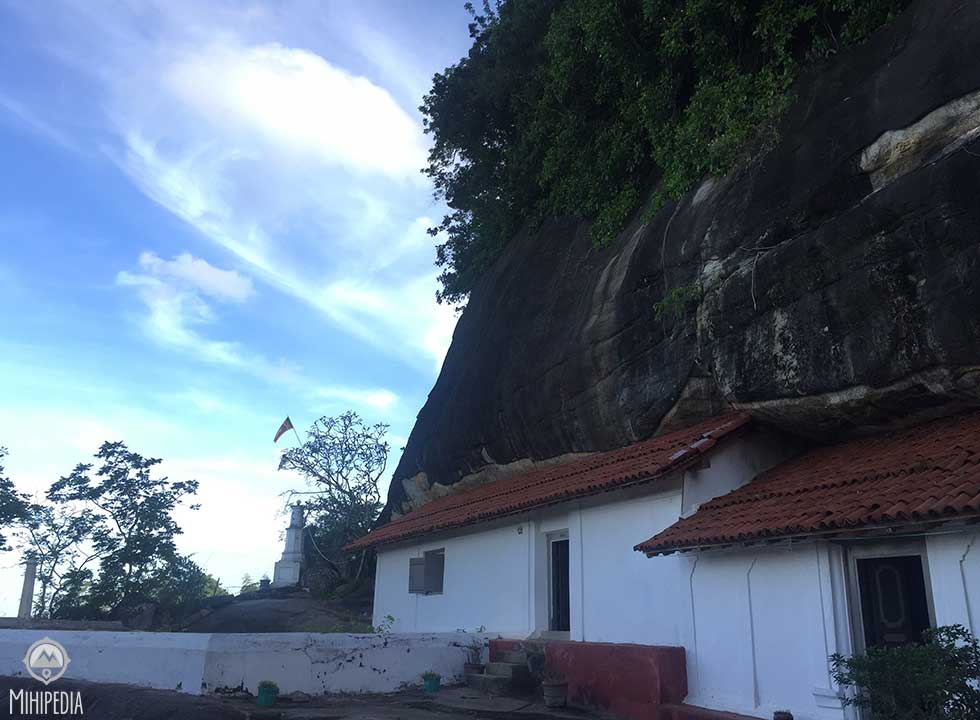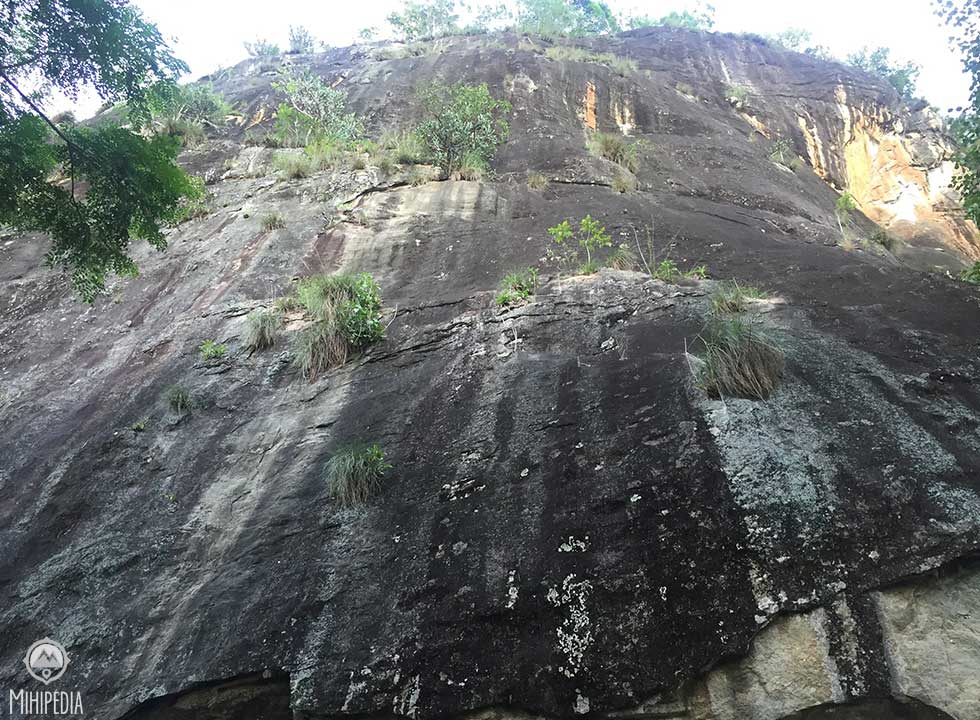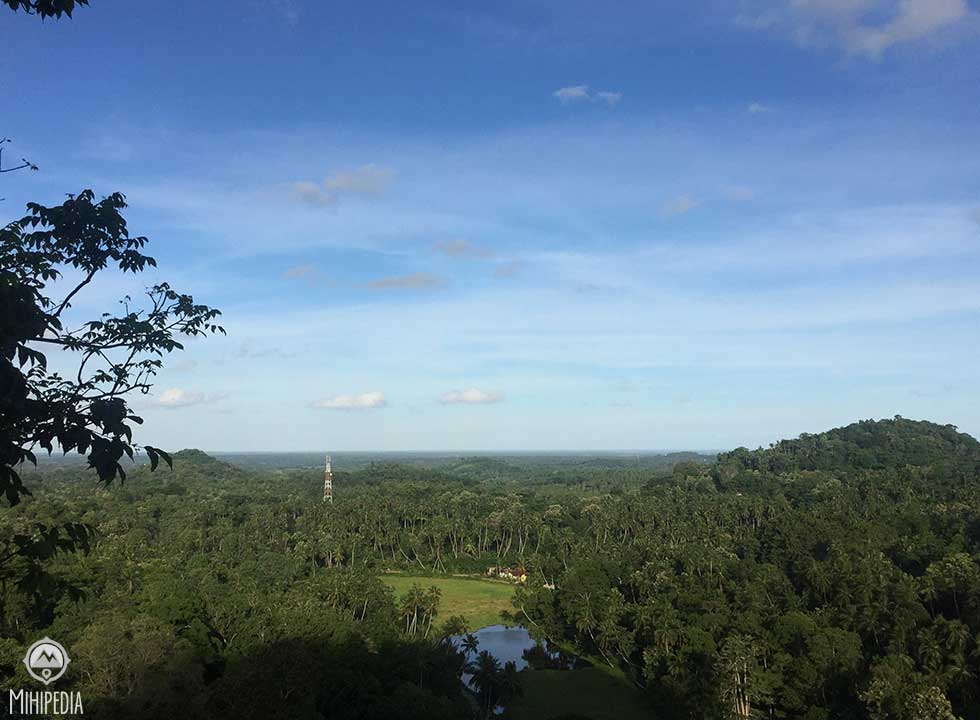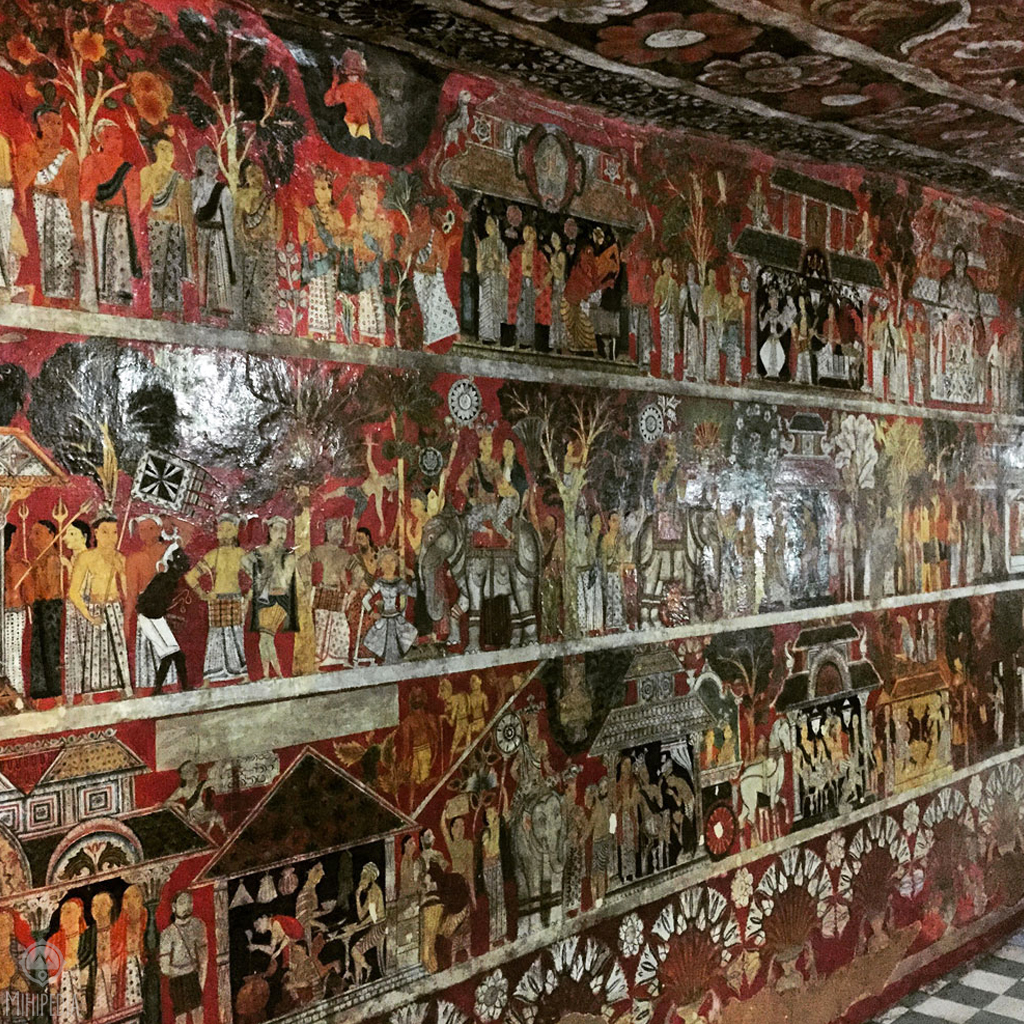It is an idyllic weekend in the Southern coast of Sri Lanka. The sun shines fiercely, wilting everything in its glare. I am lounging on a daybed beside a cool fresh-water pool on one side and the steaming ocean on the other.
This beautiful abode, called Thalassa, is located almost at the 189km post, past the sleepy coastal town of Dikwella, best known for long sandy beaches protected by reefs and sandbars, and ideal for safe sea bathing.



It’s three o’clock in the afternoon and, despite the heat of the day, I am ready to visit the Mulkirigala Rock temple, which is another 24kms passing Tangalle. On arrival, I buy some flowers that are thrust into my hands by a wayside seller, tighten the knot of my sarong, remove my footwear and get ready to climb.
The temple is built on a rock 205m (673ft) above sea level, with a total of 533 steps to the summit. Despite the tall trees of the surrounding jungles, the heat of the day and the steep stone steps makes the climb strenuous at times. Thankfully the five layers or caves have some beautiful temple art to observe, and breaks the journey to the top.
According to the ancient chronicle Mahavamsa, the Mulkirigala temple was constructed by King Saddhatissa (137-119 BC), in the 3rd century. After this period the temple received royal patronage by numerous successive kings. During 461-479 AD, a stupa was constructed here was by King Datusena and the temple was further developed by King Kirti Sri Rajasinghe (1747-1782).
During this 2-hour climb, I come across seven ‘vihara’s with seven massive Buddha statues built within five caves that lie one over the other. Each of the cave walls comprises stunning rock inscriptions and paintings based on Jataka stories. The colours and textures still remain vivid and detailed, and is a perfect example of what exquisite beauty and mystery lies within our ancient temples.
According to Professor Senake Bandaranayake, a published authority on Sri Lankan archeology and culture, the art at this Mulkirigala temple has some of the finest expressions of the southern school. He writes in his book, The Rock and Wall Paintings of Sri Lanka, “Located in a border area, at the southernmost extremity of both the maritime region and the Kandyan kingdom, Mulkirigala is associated with some of the earliest evidence for the existence of late-period murals from a time pre-dating the mid-18th century revival… The temple is mentioned in connection with the transmission or reintroduction of the mural tradition from Kandy to the southern region in the latter half of the 18th century”.
Here’s another interesting piece of historical evidence. In 1826, British civil servant George Turnour, who had dedicated his life to deciphering manuscripts of Sri Lanka’s past wanted to find a ‘tika’, a prose key, to decipher the Mahavamsa. A priest named Gallé was convinced that the tika was to be found in one of the old Buddhist temple repositories. The missing “tika” was eventually found at Mulkirigala, the temple founded 150 years before the birth of Christ.
Despite the climb getting steeper and denser, the rock inscriptions are breathtaking and make every step of this climb worth it. At the very summit, I meet David, a spritely 89-year old caretaker who explained to me how King Saddatissa, who was hunting in the area, had met a Veddha who informed him of a rock on which a temple could be built. The king agreed and mentioned to others about the ‘mu kivu gala’ (the rock that he mentioned), which evolved into Mulkirigala, as it is known today.

I spend time at the summit taking in the surrounding view of Benagala, Kondagala, Bisogala and Seelawathiegala, all of which have Buddhist shrines.
Also in Dikwella, on the turn off to Beliatta, is the Vevurukannala temple. Having read some interesting stories on this temple, I had to visit. As with all temples, this one too had its ample share of devotees, dressed in white, carrying lotus flowers and incense sticks and ambling about. Some had come for divine intervention and others, like me had come to sight see.
The primary significance of this temple is the 160ft (or 8-storey) high statue of the Buddha that towers over the temple grounds. Considered to be the largest statue in Sri Lanka, it dates back to the reign of Sri Rajadhi Rajasingha (1782-1798). Sri Rajadhi was a member of the Madurai royal family and succeeded his brother Kirti Sri Rajasinha as King of Kandy in 1782.

Apart from the main temple with some stunning sculptures, wall art and statues, I come across another section with a warning sign that tells me I’m about to enter hell. Just past the entrance is a long tunnel-like room that has a collection of life-sized statues depicting punishments meted out in a Buddhist hell! Gruesome scenes of the fiery pits of hell, known as naraka, show people being boiled alive, sawed in half, decapitated and various other stomach-churning warnings to those who defy the Buddhist tenets. Sinners, from petty liars to alcoholics, adulterers and rapists and murderers, are inflicted with the ultimate consequences of pain and suffering through various forms of torture.
And to my surprise, parents with young, trembling kids in tow are taking this chance to teach them a lesson in morality!
The next section has some wonderful life-sized sculptures and wall paintings of the events in Buddha’s life. Episodes from numerous Jataka stories are beautifully illustrated in this large room, a far cry from my previous tour through hell!




I believe that every schoolchild should be taken to visit these temples to add colour and interest to boring classroom lessons, although not so much the lessons in righteousness.
Back at Thalassa, the evening breeze wafts across the open veranda and I am ready to take a dip in the warm waters after which I indulge in a glass of wine, despite the warnings of what could befall me for consuming alcohol!

great article. Thalassa is also the name of a building at stc.
LikeLike
…’I am ready to take a dip in the warm waters after which I indulge in a glass of wine, despite the warnings of what could befall me for consuming alcohol!’
I like that.
LikeLike